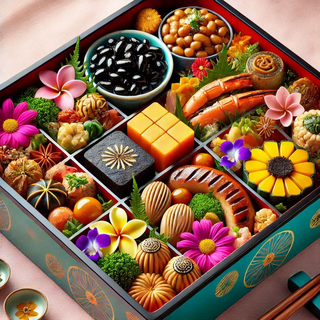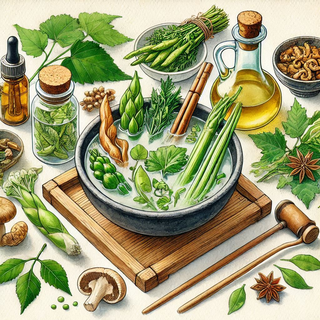Hatsumode: Visiting shrines and temples to pray for the new year.
Osechi Cuisine: Preparing and eating special dishes with family.
Nengajo: Sending New Year's greeting cards to friends and family.
Otoshidama: Giving children New Year's money gifts.
Other countries also have their unique ways of celebrating the New Year. In the United States, countdown parties are popular, especially the one in Times Square, New York. In China, while the lunar New Year (Spring Festival) is more prominent, January 1st is still celebrated as "Yuan Dan". In South Korea, people watch the first sunrise of the year and spend time with family.
About Osechi Cuisine
Osechi cuisine is a traditional Japanese New Year's food with each dish having a special meaning.
Kuromame (Black Beans): Symbolizes health and diligence.
Kazunoko (Herring Roe): Wishes for prosperity and many children.
Tazukuri (Dried Sardines): Represents a good harvest.
Kombumaki (Kelp Rolls): Symbolizes joy and happiness.
Datemaki (Sweet Rolled Omelette): Represents knowledge and learning.
Kohaku Kamaboko (Red and White Fish Cake): Red is for protection against evil and white symbolizes purity.
Kurikinton (Sweet Chestnut Paste): Represents wealth and prosperity.
Ebi (Shrimp): Symbolizes longevity.
Tai (Sea Bream): Associated with celebrations and good fortune.
Kurogoma (Black Sesame): Represents prosperity and good fortune.
Osechi cuisine is eaten to wish for the family's happiness, prosperity, and health in the new year. These dishes help share and express New Year's wishes among family members.
 |
【このカテゴリーの最新記事】
-
no image
-
no image
-
no image

